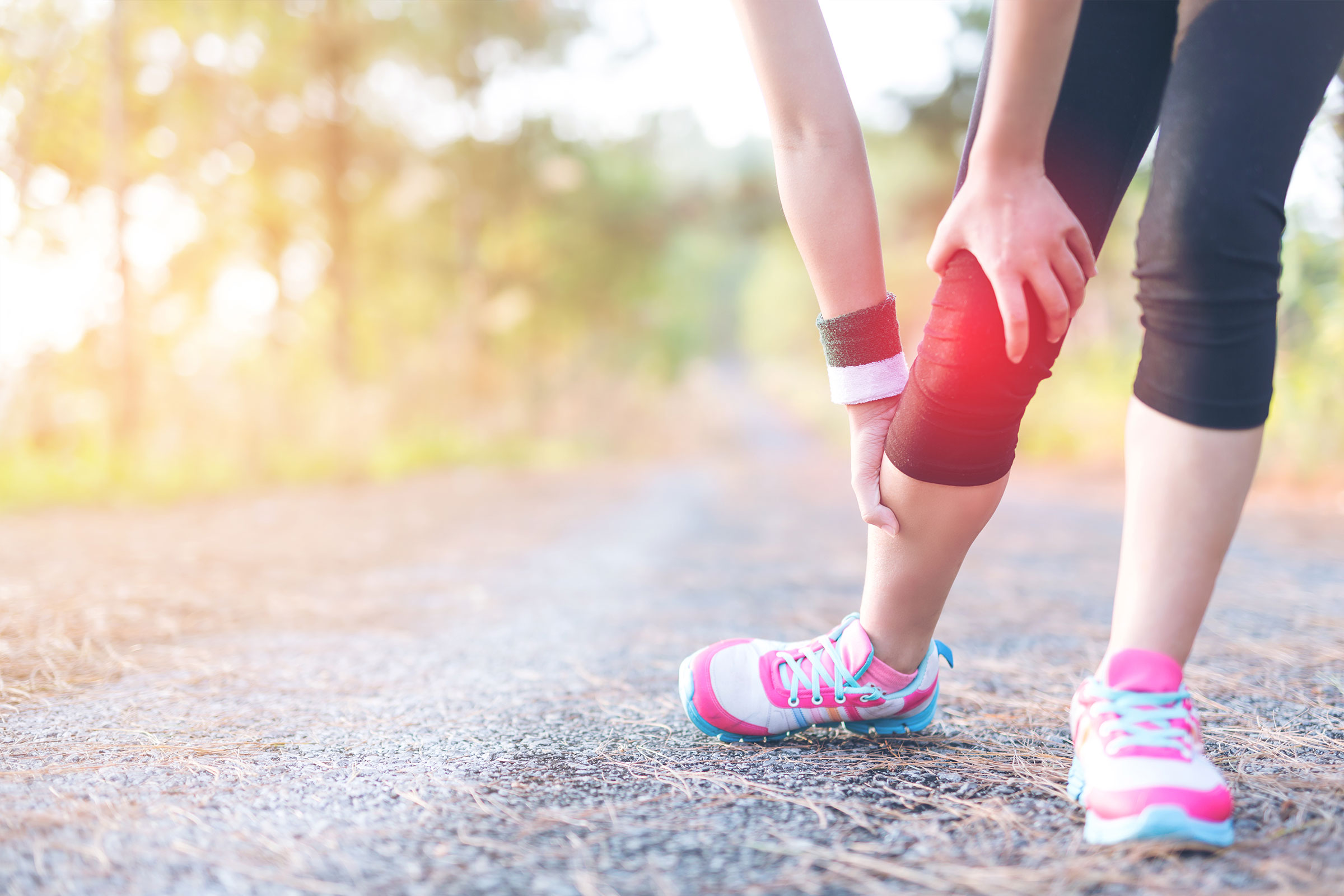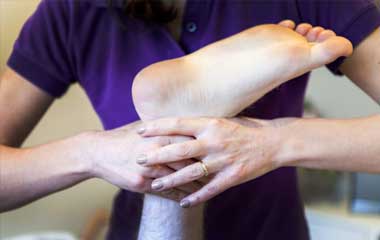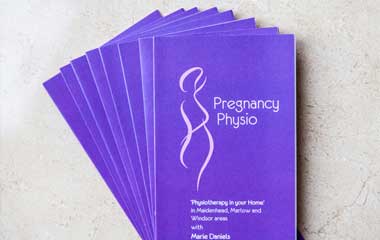
Ligament Damage
There are 4 main ligaments to the knee: the medial collateral ligament (MCL) is on the inside of your knee and the lateral collateral ligament (LCL) is on the outer side; they limit how much your knee can move from side to side; your anterior cruciate ligament (ACL) and posterior cruciate (PCL) form a cross inside your knee and provide stability to your knee by controlling how much it moves backwards and forwards. The extent of the damage is graded 1 to 3. You are more likely to damage your MCL and ACL. The classic symptoms are pain, swelling and giving way. You may struggle to fully weight bear with the torn ligament.
Our Physiotherapy treatment for a knee ligament injury may include:
- Advice on rest, ice and ibuprofen
- Massage or myofascial release at the site of pain and inflammation for muscle tightness
- Ultrasound to reduce pain and inflammation
- Acupuncture to reduce pain and muscle tightness
- Exercise programme incorporating strengthening, stretching and proprioception
- Sport specific rehabilitation
- Referral to a knee specialist for an MRI scan and possible knee arthroscopy to repair the ligament when there is poor progression with physiotherapy
Meniscus (cartilage) damage
A torn meniscus is one of the most common knee injuries caused by forcefully twisting or rotating your knee, such as sudden stops and turns in tennis, basketball and football. In older adults, degenerative changes of the knee can contribute to a torn meniscus. There are two C-shaped pieces of cartilage (menisci) on the inside and outside of your knee that act as shock absorbers between your shinbone (tibia) and your thigh bone (femur). A torn meniscus causes pain, swelling and stiffness within 24 hours of sustaining the injury. You also may experience giving way and ‘locking’ of your knee and have difficulty extending your knee fully.
Our Physiotherapy treatment for meniscal damage may include:
- Advice on rest, ice and ibuprofen
- Massage or myofascial release at the site of pain and inflammation
- Ultrasound to reduce pain and inflammation
- Exercise programme incorporating strengthening, stretching and proprioception
- Sport specific rehabilitation
- Referral to a knee specialist for an MRI scan and possible knee arthroscopy to trim or repair the tear
Osteoarthritis (OA)
Osteoarthritis is the process of ‘wear and tear’ where the cartilage surrounding the knee joint gradually wears away over time, resulting in bone rubbing against bone. It commonly develops in weight-bearing joints, such as the hip and knee. You are more likely to develop this condition with increasing age (often over 50), if there is a family history, previous injury to the knee joint or obesity. Pain and stiffness, especially in the morning, are the first symptoms, with noticeable difficulties in functional daily living activities such as rising from a chair, walking or climbing stairs.
Our Physiotherapy treatment for knee osteoarthritis may include:
- Ice or heat, ibuprofen and lifestyle modifications such as, losing weight, switching from high impact activities (like jogging/tennis) to lower impact activities (like swimming or cycling)
- Manual therapy to increase range of motion and knee flexibility
- Strengthening exercises for your core, gluteal and quadriceps
- Referral to a knee specialist when there is limited improvement with conservative management and a total knee replacement (TKR) is needed
ACL Injury
The ACL is a tough band of tissue joining the thigh bone to the shin bone at the knee joint. It runs diagonally through the inside of the knee and provides rotary stability to the knee. It also helps to provide knee stability by controlling how much it moves backwards and forwards. The ACL is commonly injured in sports such as skiing, tennis, squash, football and rugby when you twist your knee, such as when you land on your leg then quickly turn. Surgery is indicated if there is a partial or complete tear of the ligament and you are unable to return to the sport that you enjoy.
Our Physiotherapy treatment for an ACL injury may include:
- Advice on rest, ice and ibuprofen
- Massage or myofascial release at the site of pain and inflammation for muscle tightness
- Ultrasound to reduce pain and inflammation
- Acupuncture to reduce pain and muscle tightness
- Exercise programme incorporating strengthening, stretching and proprioception
- Sport specific rehabilitation
- Referral to a knee specialist for a possible ACL reconstruction (involving taking a piece of tendon, usually from your patella tendon or hamstring to replace the damaged ligament), especially if you do a lot of sport or you have also torn a meniscus
ITB Syndrome
Iliotibial band syndrome (ITB syndrome) is an overuse injury of the connective tissues that are located on the outer part of the hip, thigh and knee. It causes pain and tenderness in those areas, especially just above the knee joint and commonly affects runners and cyclists. The ITB syndrome may be the result of a combination of issues, including poor training habits, poor muscle flexibility and mechanical imbalances, especially involving the low back, pelvis, hips and knees.
Physiotherapy can help with:
- Advice on rest, ice and ibuprofen and use of a foam roller
- Massage or myofascial release at the site of pain and inflammation
- Ultrasound to reduce pain and inflammation
- Stretching and strengthening exercises
- Referral to a podiatrist/orthotist for orthotics if there is a gait problem, pelvic tilt or leg length discrepancy as a potential cause of ITB syndrome
- Referral to a GP or hip specialist for a corticosteroid injection for pain relief if there is limited improvement with physiotherapy
Patellofemoral joint (PFJ) pain
Patellofemoral joint pain is often described as a dull, aching pain in the front of your knee. The pain can be aggravated when you run, walk up or down stairs, sit with the knee bent for long periods of time, kneel or squat. It is linked to overuse (running or jumping sports that put repetitive stress on your knee joint), muscle imbalances or weakness (when the muscles around your hip and knee do not keep your kneecap or patella properly aligned), trauma to the kneecap (dislocation or fracture) or knee surgery (especially repair to the anterior cruciate ligament using your own patella tendon as a graft).
Our Physiotherapy treatment for patellofemoral joint pain may include:
- Advice on training and shoe orthotics if you have flat feet
- Ultrasound to reduce acute inflammation
- Taping to maintain correct patella alignment
- Strengthening exercises, especially quadriceps and hip abductor muscles to help maintain knee alignment during activity
- Stretching exercises to improve flexibility
Bursitis
Bursae are small, fluid filled sacs that lie between tendons and bones around the knee, acting as cushions to help reduce friction. The bursae that typically cause knee bursitis are called prepatellar bursae and are located at the front of the knee. The knee might feel achy or tender when pressure is placed on the knee, such as kneeling or just pressing down on it. Previous knee injury, repetitive, prolonged kneeling, or other underlying conditions, such as osteoarthritis, rheumatoid arthritis and gout can cause bursitis.
Physiotherapy can help with:
- Advice on ice, ibuprofen, compression and avoiding activities that worsen symptoms, such as kneeling and high impact sports
- Manual therapy with massage
- Ultrasound to reduce the inflammation
- Strengthening exercises for your core, gluteal (buttock) and quadriceps muscles
- Stretching tight knee muscles
Total Knee Joint (TKR) Replacement
In a total knee replacement (TKR), the damaged bone and cartilage is removed from both sides of your knee joint and replaced with prosthetic components. The most common reason for surgery is osteoarthritis. Other health conditions that cause knee damage include rheumatoid arthritis, haemophilia and knee injury. Post-operative recovery usually takes 3 – 6 months when you can return to long walks, cycling or playing golf.
Physiotherapy can accelerate your recovery with:
- Advice on range of movement (ROM) and strengthening exercises around the hip and knee
- Massage to reduce post-operative tightness
- Interferential (ITF) for pain relief
- Gait re-education – teaching you to walk again unaided








